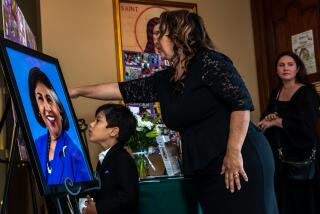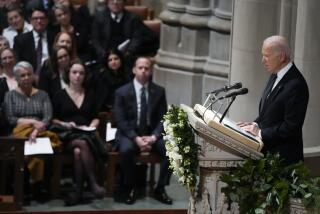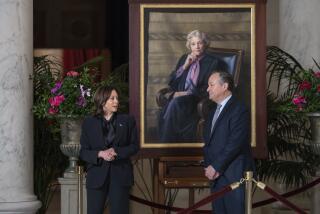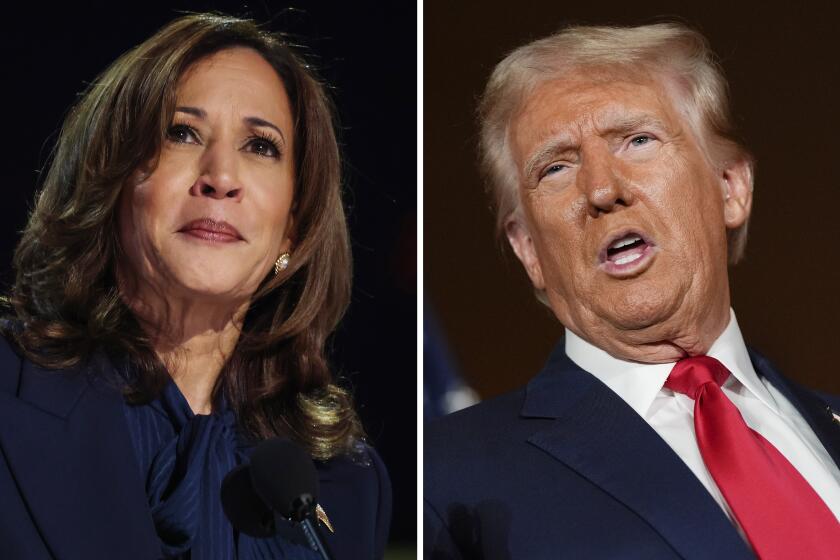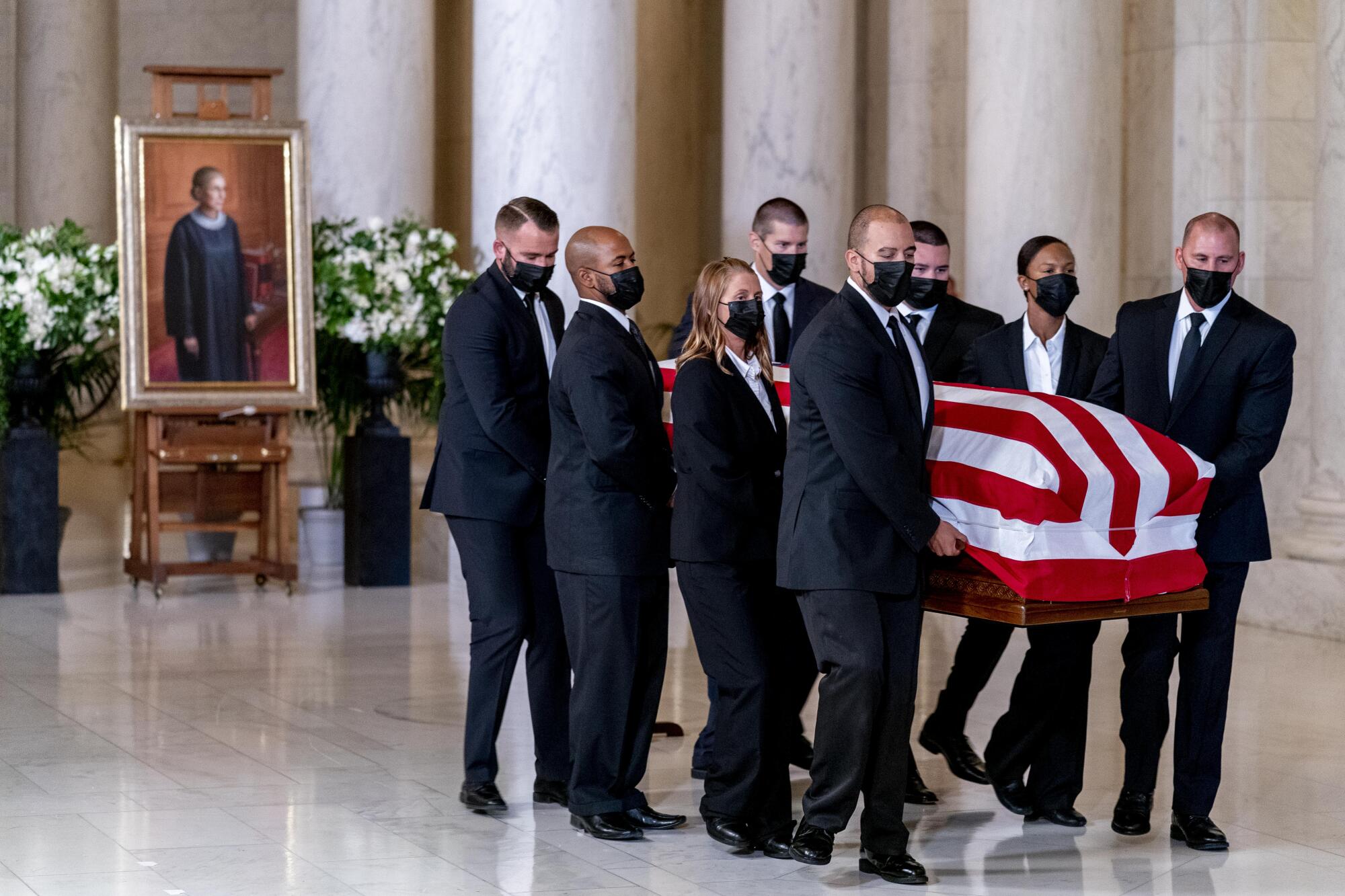
WASHINGTON â With crowds of admirers swelling outside, Supreme Court Justice Ruth Bader Ginsburg was remembered Wednesday at the court by grieving family, colleagues and friends as a prophet for justice who persevered against long odds to become an American icon.
The courtâs eight justices, masked along with everyone else because of the coronavirus outbreak, gathered for the first time in more than six months for the ceremony to mark Ginsburgâs death from cancer last week at age 87 after 27 years on the court.
Washington already is consumed with talk of Ginsbugâs replacement, but Chief Justice John G. Roberts Jr. focused on his longtime colleague.
The best words to describe Ginsburg are âtough, brave, a fighter, a winner,â Roberts said, but also âthoughtful, careful, compassionate, honest.â
The woman who late in life became known in admiration as the Notorious RBG âwanted to be an opera virtuoso, but became a rock star instead,â Roberts said. Ginsburgâs two children, Jane and James, and other family members sat on one side of the casket, across from the justices.
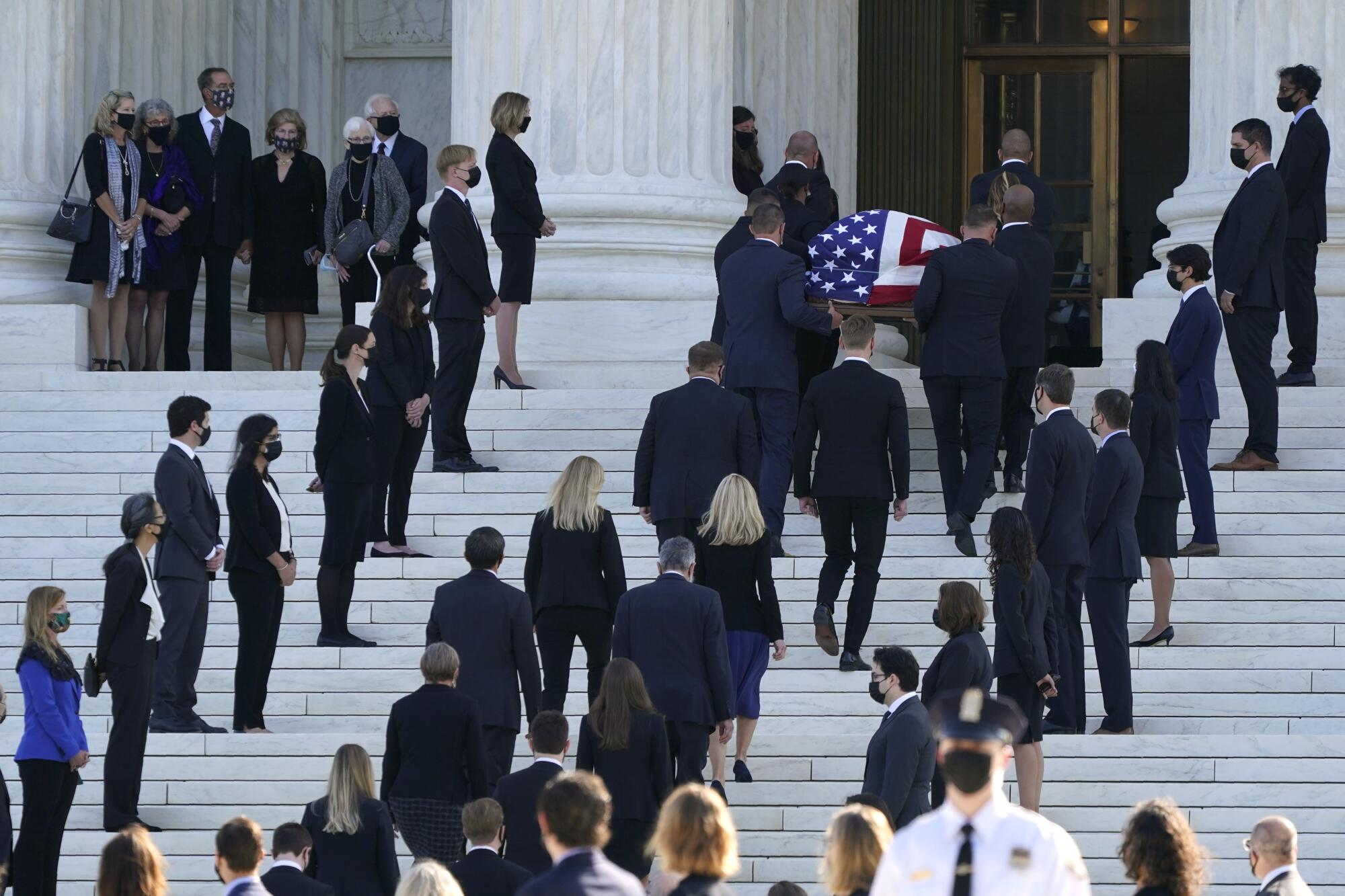
With her portrait on display nearby, Ginsburgâs flag-draped casket sat in the courtâs Great Hall for the private service before it was moved outside so the public could honor her Wednesday and Thursday. Health precautions because of the pandemic led the court to limit the number of people inside the building, which has been closed to the public since March.
Thousands of people were expected to pay their respects to the womenâs rights champion and leader of the courtâs liberal bloc. Her casket, carried inside past her former law clerks who lined the courthouse steps, is to be on public view until 10 p.m. Wednesday and 9 a.m. to 10 p.m. Thursday.
The members of the court were arrayed in their seats in order of seniority, now changed by Ginsburgâs death so that Justices Clarence Thomas and Stephen G. Breyer flanked Roberts. Breyer took the spot Ginsburg held when the court last gathered for a justiceâs memorial, in 2019 following the death of John Paul Stevens.
Rabbi Lauren Holtzblatt of Washington, D.C., compared Ginsburg to a prophet who imagined a world of greater equality and then worked to make it happen.
âThis was Justice Ginsburgâs lifeâs work. To insist that the Constitution deliver on its promise, that we the people would include all the people. She carried out that work in every chapter of her life,â said Holtzblatt, whose husband, Ari, once worked as a law clerk to Ginsburg.
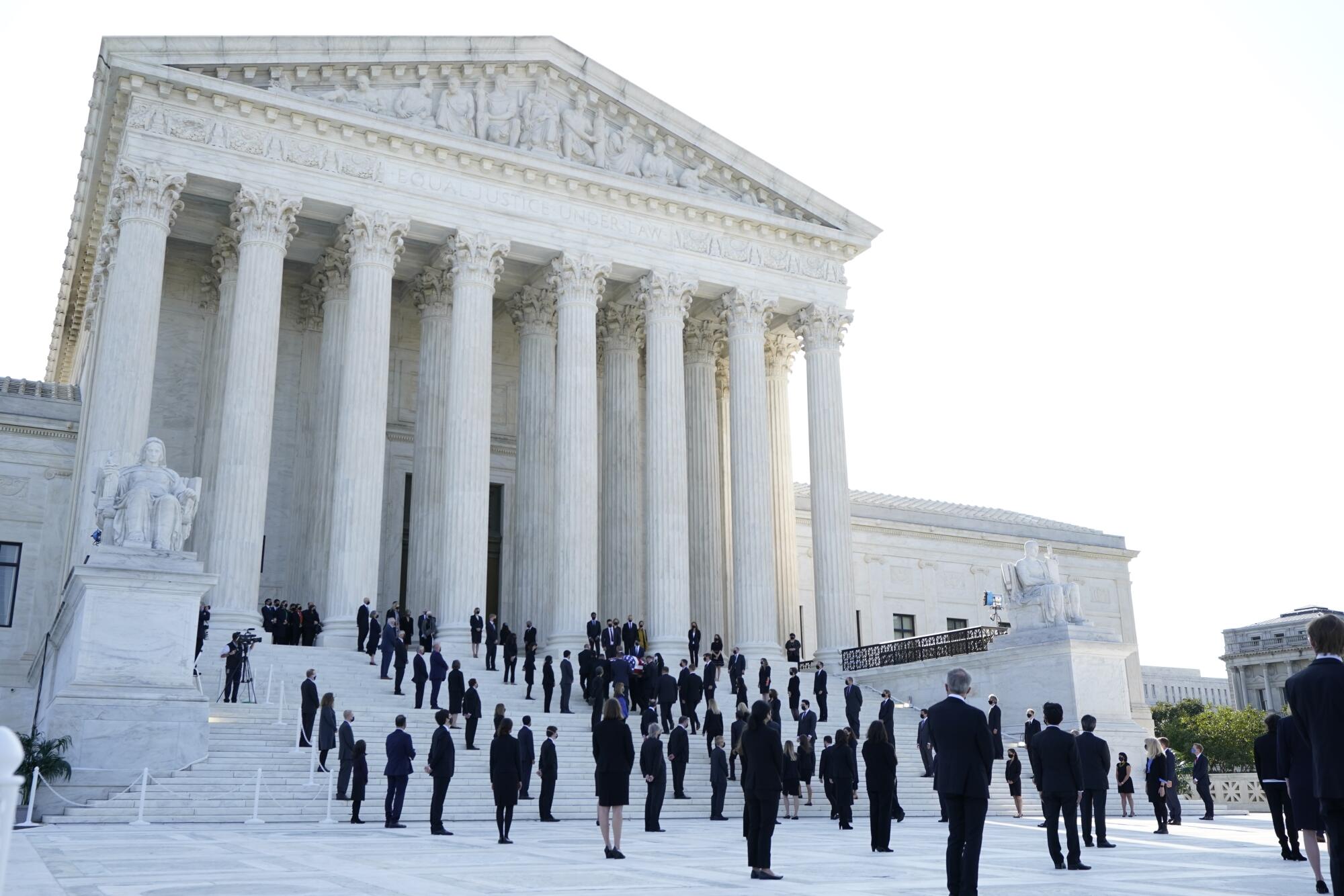
Since her death Friday evening, people have been leaving flowers, notes, placards and all manner of Ginsburg paraphernalia outside the court in tribute to the woman who became known in her final years as the âNotorious RBG.â Court workers cleared away the items and cleaned the court plaza and sidewalk in advance of Wednesdayâs ceremony.
Ginsburgâs death has added another layer of tumult to an already chaotic election year. President Trump and Senate Republicans are plowing ahead with plans to have a new justice on the bench, perhaps before the Nov. 3 election. Trump, who traded insults with Ginsburg four years ago, was expected to pay his respects Thursday.
Only Chief Justice Roger Taney, who died in October 1864, died closer to a presidential election. President Abraham Lincoln waited until December to nominate his replacement, Salmon Chase, who was confirmed the same day.
When Justice Antonin Scalia, Ginsburgâs closest friend on the court, died unexpectedly in 2016, Republicans refused to act on President Obamaâs high-court nomination of Judge Merrick Garland.
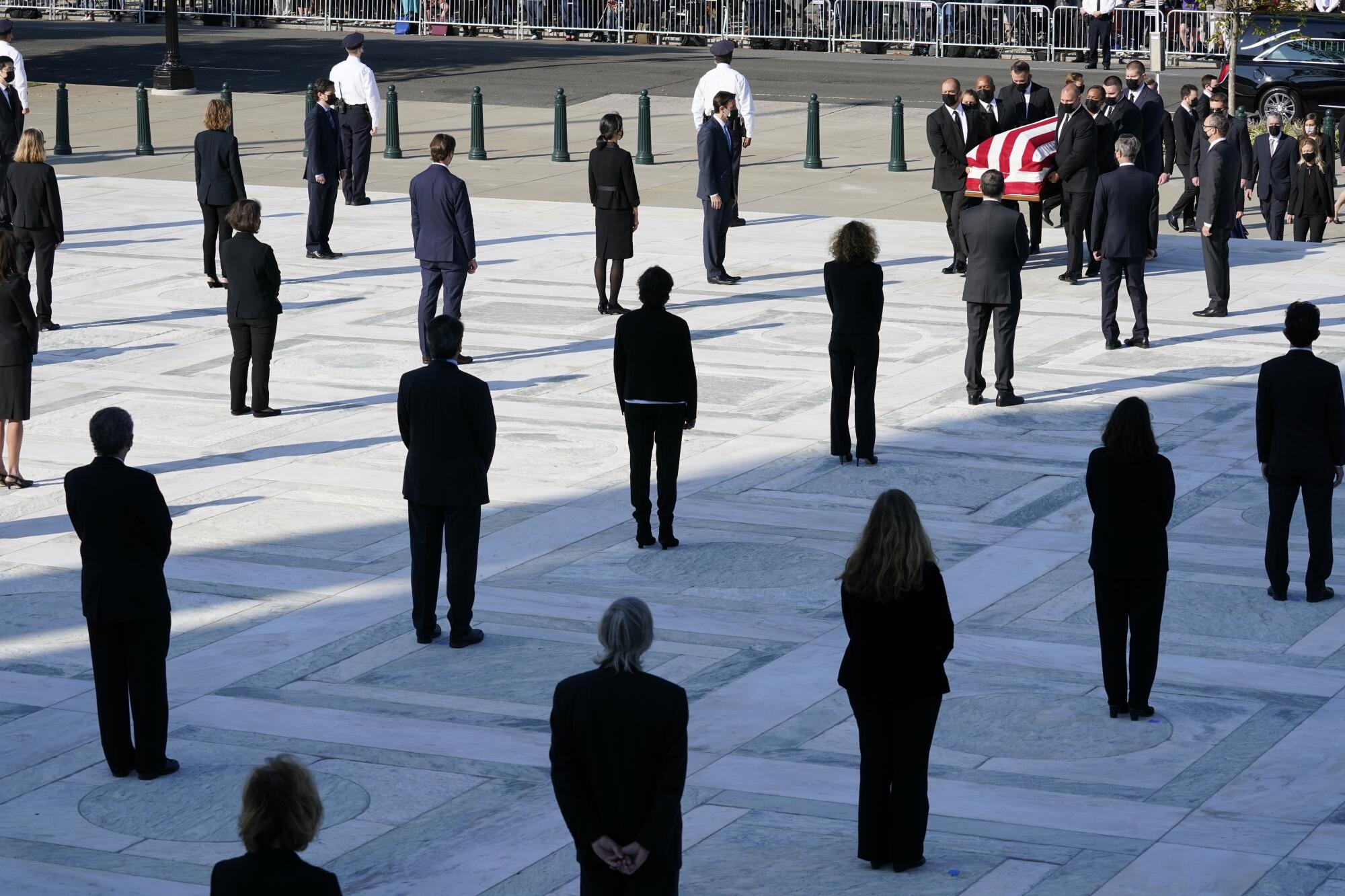
The entrance to the courtroom, along with Ginsburgâs chair and place on the bench next to Roberts, have been draped in black, a longstanding court custom. These visual signs of mourning, which in years past have reinforced the sense of loss, will largely go unseen this year. The court begins its new term Oct. 5, but the justices will not be in the courtroom and instead will hear arguments by phone.
After the private ceremony inside the court, Ginsburgâs casket will be on public view from 11 a.m. to 10 p.m. Wednesday and 9 a.m. to 10 p.m. Thursday.
Heather Setzler, a physicianâs assistant from Raleigh, N.C., started her drive at 1 a.m. to be at the court.
Setzler said on annual trips to Washington she always set aside an hour or so to tour the Supreme Court and hang out in the cafeteria, hoping for an impromptu chance to meet.
She appreciated not only the serious legacy Ginsburg left behind but was also a fan of the pop culture phenomenon that surrounded the Notorious RBG. Setzler named her two cats Hillary Ruth and Kiki, in honor of Ginsburgâs childhood nickname.
âThere was just something about her. She was so diminutive yet turned out to be such a giant,â Setzler said, wearing a face mask adorned with small portraits of Ginsburg.
Setzler said sheâs frightened by the prospect that Ginsburgâs replacement could lock the court into a solid conservative majority.
âIt pains me to think that everything she worked so hard for could be turned around in a couple of years,â she said.
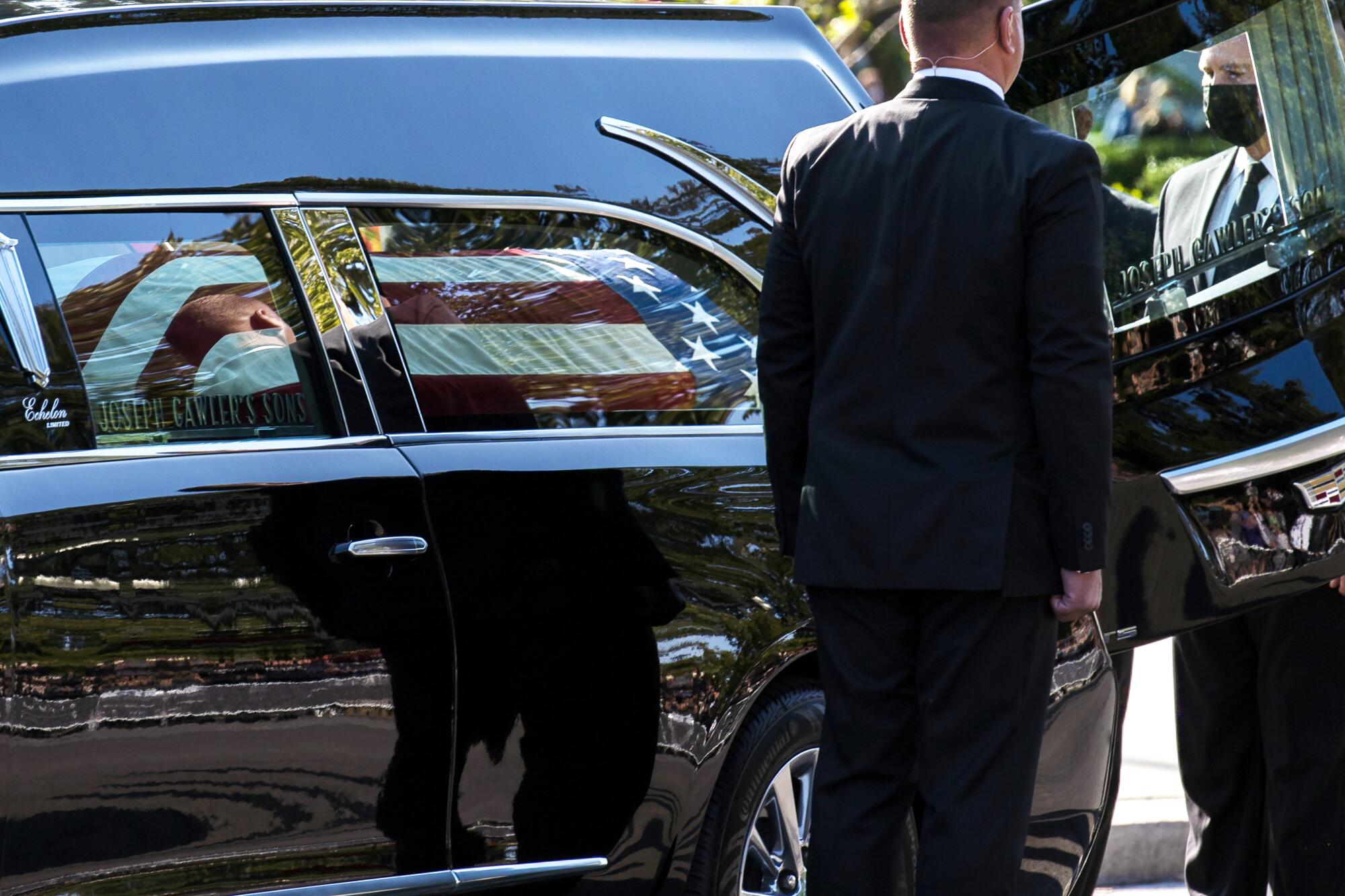
On Friday, Ginsburg will lie in state at the Capitol, the first woman to do so and only the second Supreme Court justice after William Howard Taft. Taft had also been president. Rosa Parks, a private citizen as opposed to a government official, is the only woman who has lain in honor at the Capitol.
Ginsburg will be buried beside her husband, Martin, in a private ceremony at Arlington National Cemetery next week. Martin Ginsburg died in 2010. She is survived by a son and a daughter, four grandchildren, two stepgrandchildren and a great-grandchild.
More to Read
Get the L.A. Times Politics newsletter
Deeply reported insights into legislation, politics and policy from Sacramento, Washington and beyond. In your inbox three times per week.
You may occasionally receive promotional content from the Los Angeles Times.
